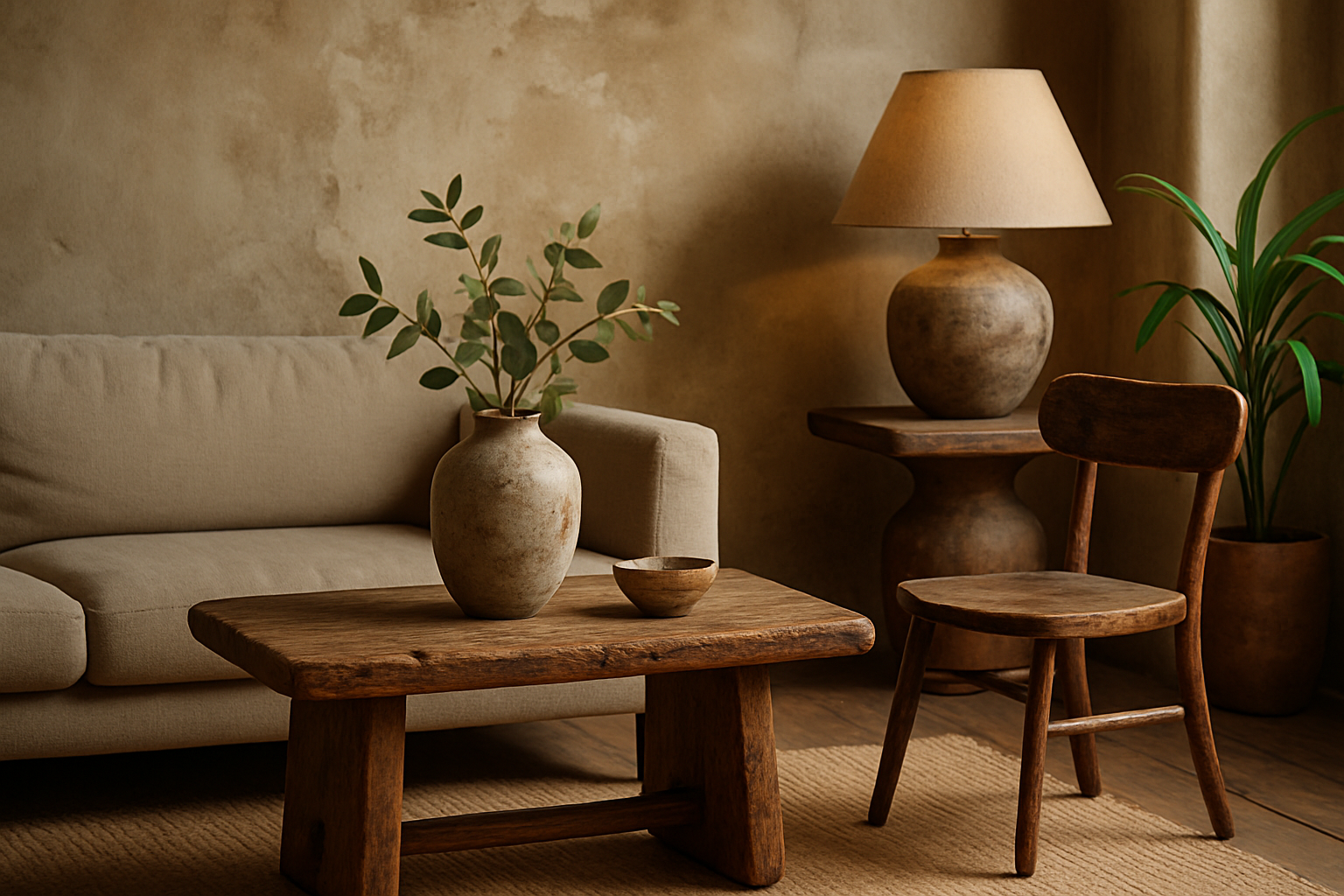Whimsical Wabi-Sabi: Embracing Imperfection in Modern Interiors
In a world obsessed with perfection, a rebellious design philosophy is taking root in homes across America. Wabi-sabi, the Japanese aesthetic that celebrates imperfection and transience, is being reimagined with a playful twist. This fusion of ancient wisdom and contemporary whimsy is transforming living spaces into unique, character-filled havens that tell a story of their own.

The Roots of Wabi-Sabi
Wabi-sabi has its origins in 16th century Japanese tea ceremonies, where simplicity and rustic authenticity were prized over opulence and perfection. The term combines two concepts: wabi, which refers to the beauty of simplicity and humility, and sabi, which embraces the passage of time and the beauty of aging.
In traditional Japanese aesthetics, wabi-sabi manifests in weathered wood, patinated metals, and asymmetrical ceramics. It’s a philosophy that finds beauty in the flaws and celebrates the natural cycle of growth, decay, and rebirth.
The Modern Whimsical Twist
Today’s interpretation of wabi-sabi infuses this time-honored concept with a sense of playfulness and individuality. While maintaining the core principles of simplicity and authenticity, whimsical wabi-sabi introduces unexpected elements that bring joy and personality to a space.
This modern approach might incorporate vibrant pops of color against a neutral backdrop, mix vintage finds with contemporary pieces, or showcase handmade items that celebrate the maker’s touch. The key is to create an environment that feels lived-in, loved, and uniquely personal.
Key Elements of Whimsical Wabi-Sabi Design
-
Imperfect Beauty: Embrace items with character – chipped pottery, wrinkled linen, or furniture with a patina. These imperfections tell a story and add depth to your space.
-
Natural Materials: Incorporate organic elements like wood, stone, and natural fibers. These materials age gracefully and connect your home to the natural world.
-
Handcrafted Touch: Support artisans by including handmade items in your decor. From woven baskets to hand-thrown ceramics, these pieces bring warmth and authenticity to your home.
-
Playful Accents: Add unexpected elements that make you smile – a quirky piece of art, a boldly patterned pillow, or a whimsical light fixture can infuse joy into the serene wabi-sabi aesthetic.
-
Mindful Curation: Adopt a less-is-more approach, carefully selecting items that have meaning or bring you joy. This prevents clutter and allows each piece to shine.
Implementing Whimsical Wabi-Sabi in Your Home
Creating a whimsical wabi-sabi inspired space doesn’t require a complete overhaul of your home. Start small by incorporating a few key elements:
-
Display Collections Thoughtfully: Arrange your favorite imperfect objects – like sea glass or vintage postcards – in a simple, asymmetrical display.
-
Mix Old and New: Pair a sleek modern sofa with a weathered antique coffee table, or hang contemporary art in ornate vintage frames.
-
Embrace Texture: Layer different textures – rough linen, smooth ceramics, nubby wool – to create depth and interest in your space.
-
Add Living Elements: Incorporate plants of varying shapes and sizes. Their organic forms and growth patterns embody the wabi-sabi spirit.
-
Play with Color: While traditional wabi-sabi favors muted earth tones, don’t be afraid to introduce unexpected pops of color through accessories or artwork.
The Psychology of Whimsical Wabi-Sabi
Beyond its aesthetic appeal, whimsical wabi-sabi offers psychological benefits. In a culture that often equates perfection with success, this design philosophy provides a refreshing counter-narrative. It encourages us to find beauty in the present moment, appreciate the passage of time, and let go of the need for everything to be flawless.
Living in a whimsical wabi-sabi inspired space can reduce stress and promote mindfulness. It reminds us to slow down, appreciate the small details, and find joy in the imperfect journey of life.
Sustainability and Wabi-Sabi
The wabi-sabi philosophy aligns naturally with sustainable living practices. By valuing and preserving older items, embracing imperfection, and choosing quality over quantity, we reduce waste and consumption.
This approach encourages us to repair rather than replace, to choose durable materials that age well, and to find beauty in what we already have. It’s a powerful antidote to the disposable culture that dominates much of modern consumerism.
Challenges and Considerations
While whimsical wabi-sabi offers a liberating approach to home design, it’s not without its challenges. Balancing the serene simplicity of traditional wabi-sabi with playful, whimsical elements requires a thoughtful touch. It’s easy to veer into cluttered or chaotic territory if not approached mindfully.
Additionally, in a culture that often equates newness with value, it can be challenging to embrace and showcase items that show wear or imperfection. Education and a shift in perspective are key to fully appreciating this aesthetic.
The Future of Whimsical Wabi-Sabi
As our lives become increasingly digital and fast-paced, the appeal of whimsical wabi-sabi is likely to grow. This design philosophy offers a much-needed antidote to the perfection-driven world of social media and the relentless pursuit of the new and shiny.
Looking ahead, we can expect to see more designers and homeowners embracing this approach, finding innovative ways to blend the soulful simplicity of wabi-sabi with personal expressions of joy and creativity. The result? Homes that feel authentic, alive, and deeply connected to the humans who inhabit them.
Whimsical wabi-sabi isn’t just a design trend – it’s a way of seeing the world. It invites us to slow down, appreciate the beauty in imperfection, and create spaces that truly reflect who we are. In a world that often feels chaotic and uncertain, this grounding yet joyful approach to home design offers a welcome refuge – a space where we can truly feel at home, imperfections and all.





